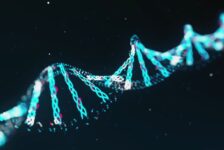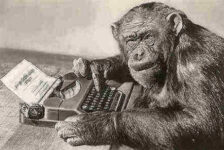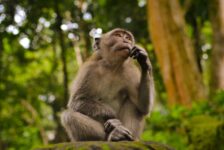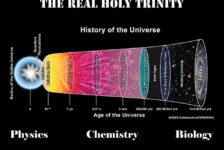In a gas, if atoms aren’t bound to each other, motion is random, and we have maximum entropy. For instance, the atoms in a tank of hydrogen. The second law of thermodynamics states that a system always goes toward disorder, and entropy is a measure of that disorder. For instance, pouring milk into coffee. Life defies that law. Some argue that an intelligent agent must be behind that. Not the case as explained below.
With binding, such as in a rock, there is less entropy. A molecular structure has even less entropy, and the more complex it is, the less entropy there is. For instance, amino acids are found even in interstellar space. Then, with molecular structures exchanging chemicals as in a living cell, the more of them are connected, the less possible other structures may be involved in it. This is further explained below.
Some argue that the stability of life suggests that God is behind it. No. It’s the chemical bindings from electrons between atoms that are responsible. The atoms are part of entropy but the binding itself isn’t because it comes from electrons. These electrons obey internal forces inside the atom. Entropy doesn’t apply to the internals of the atoms, so not to the binding either. For instance, the angle of binding between the hydrogen and oxygen atoms in water is constant, and can’t change no matter what. Precise quantum mechanics rules the inside of the atom.
Let’s imagine an ecosystem with deer, rodents, rabbits, grass and flowers. Then wolves, that were not there before, are introduced. They will kill and eat deer. Deer eat grass, so this will increase the amount of grass. This will increase the number of rabbits and rodents because they will be less visible to predators. The increase of grass will also modify the edge of the river so that it is wetter. This will widen the river’s width a little, and so on. Perhaps, the number of frogs will increase, as well as the number of fish. Bears that eat fish will strive and increase in numbers. A complex cascade of changes occurs for simply adding wolves to the ecosystem.
There are a lot of interconnections in nature. For this reason, not [just] anything can happen in nature. One modification in species A leads to another change in the chain in species B, C and D. So species B, C and D cannot hold any population amount it wants. Species are any life forms such as grass, flowers, bacteria, etc. Seen over the ecosystem, no species can evolve into anything it wants. The same holds for the evolution of life.
Evolutionists state that evolution is driven by random events and mutations. The scenario above shows that this is false for the events, and, in last month’s blog, I explained that mutations are random, but not in the way it is popularized. Otherwise, anything could happen. This gives the impression that evolution has a direction toward more complex species. Complexity is not an illusion, but a direction is. The impression is that some intelligent agent drives evolution. Not the case.
The same interconnectivity holds true for the components inside a living cell. They could not evolve in any ways possible. The evolution toward a cell didn’t happen the way of our inventions. For instance, the invention of the car came from smaller previous inventions. Wheels, engines, seats, etc, were invented separately over time for uses other than the car, then, modified, and put together to make a car. The evolution of the living cell didn’t happen that way. The DNA, ribosomes, RNA, proteins, the cell membrane, etc, didn’t evolve separately. They evolved through interconnections. This means that their structures could not evolve into anything they wished. Only some structures were possible.
Interconnectivity greatly limited what could happen next, allowing evolution to speed up. That life appeared in the first fifth after the creation of the earth was plenty of time. The explosion of complex life forms during the 50 million years of the Cambrian period was plenty of time. The environmental conditions were favorable. There was no divine help.





